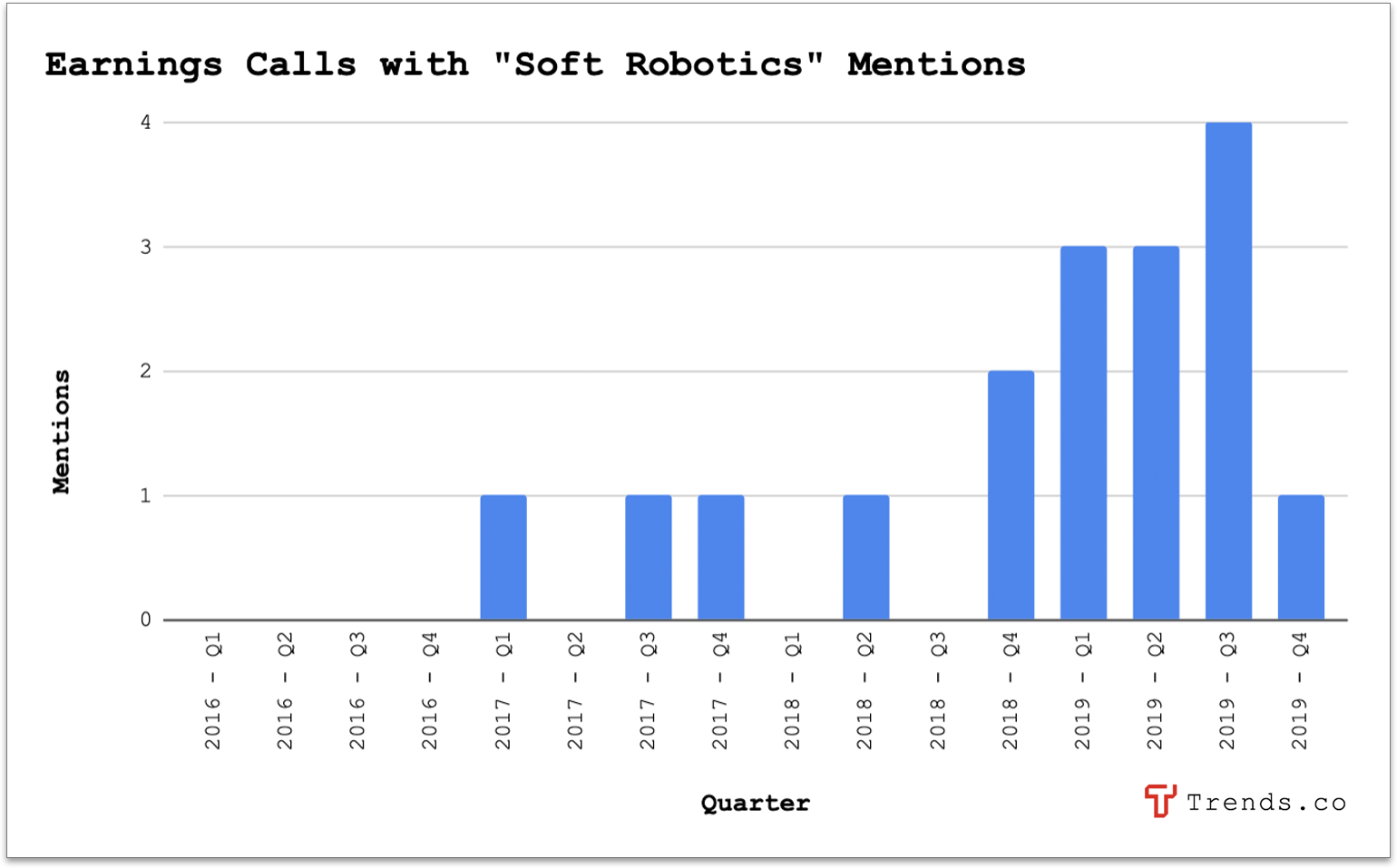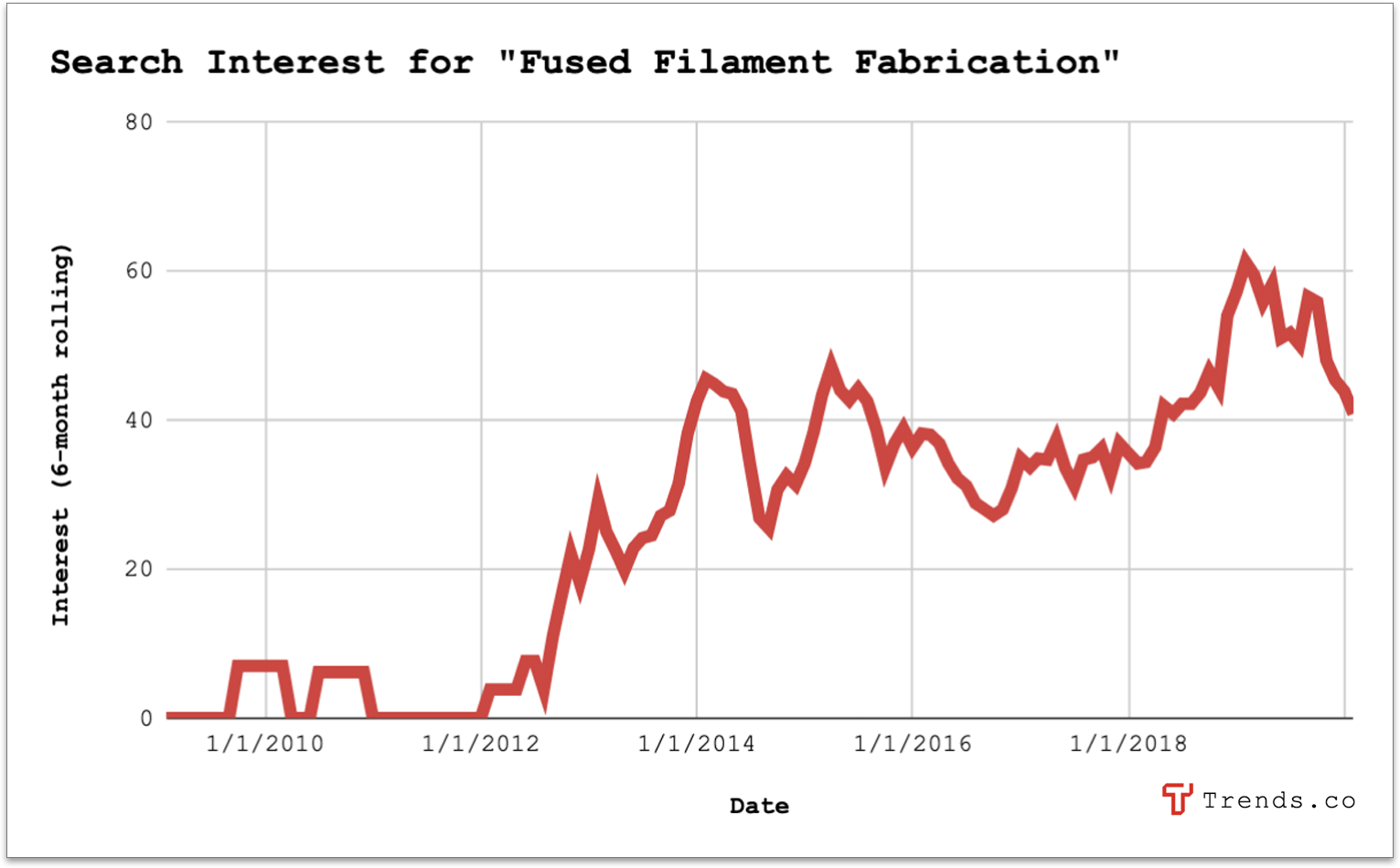nlopchantamang.com
These Soft Robots Can Parkour
Aja Frost @ajavuu

<em>Source: Google Trends</em>
The signal: When most people hear the word robot, they probably conjure up an image of Wall-E, Disney’s "last robot on earth," a rigid, metal beast. But the future of robots might look more like Baymax, Disney’s marshmallow-like "soft" robot.
In recent years, soft robotics have started to attract far more attention. These robots draw inspiration from nature, are made of malleable materials, and have a wider range of applications (including drug delivery, prosthetics, space exploration, and more), since they’re not limited by their rigidity. While the industry for soft robots has existed for some time now, they started popping up more frequently in earnings calls last year.

Source: CBInsights
The opportunity: It’s easy to forget or misunderstand the incredible efficiency of natural evolution. Each time we think nature has made a "mistake," we often later learn that nature had something much more complex in mind. It reminds us of a quote by Vogel: "Nature uses soft materials frequently and stiff materials sparingly."
Unlike "hard robots," which are very good at doing one very specific thing over and over, soft robots give way for mechanical structures that can face uncertainty and change (like these origami robots)… akin to humans or other living creatures. Some even refer to the space as a "real technological breakthrough," serving to develop "human-friendly robotics."
Materials: Soft robots aren’t made with tough metals, but instead material resembling living tissue. This requirement has resulted in a myriad of efforts from chemists, plastic engineers, and mechatronics experts.
Creation: People are looking to create their own soft robots at home, drawing information and collaborating on Harvard’s Soft Robotics Toolkit and small, but growing subreddits like r/SoftRobots. The emergence of soft robotics has been supported by technological advancements in 3D printing and fused filament fabrication (FFF).

New applications: The flexibility of soft robots brings the possibility of a suite of new applications.
- NASA has been looking to soft robots for the possibility of exploring a new planet, due to their reusability and resilience.
- Medical devices: Imagine the possibility of a robot supporting a human heart, with the flexibility to adjust to changing conditions, like cardiovascular failure. This possibility, among others like prosthetics with a wider range of motion or dynamic surgical instruments (ex: steerable needles), is possible with the flexibility of soft robots.
- Packaging: A startup called Soft Robotics has developed an FDA-compliant food packager using flexible materials, greatly reducing the risk of damaging objects.
- Hazardous environments: Bristol’s Faculty of Engineering has conjured up ElectroSkin, described as an "active, stretchable, and pocketable skin-like robot." The robot moves through electrical charges and takes inspiration from snails. Eventually, these robots may be able to assess dangerous environments or clean surfaces.
- See more possibilities in this great TED talk.

Leave a Comment